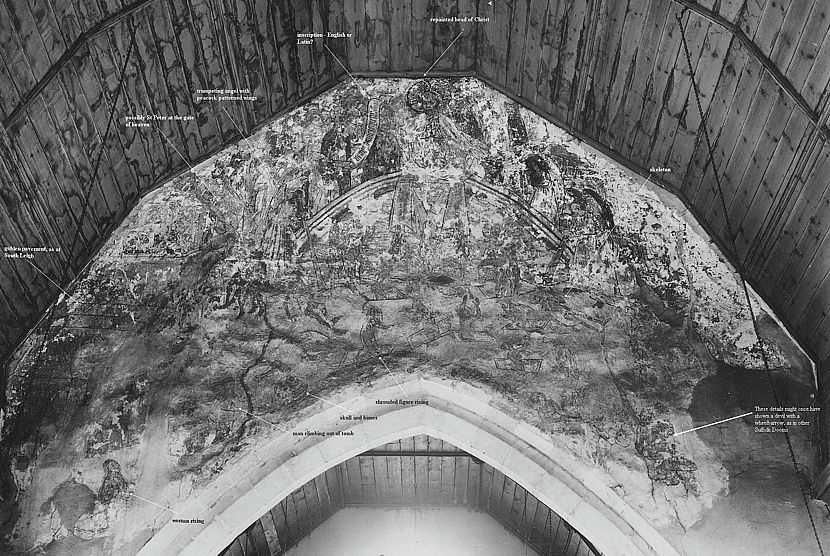Stanningfield, Suffolk (†St Edmundsbury & Ipswich) ?c.1495
Doom
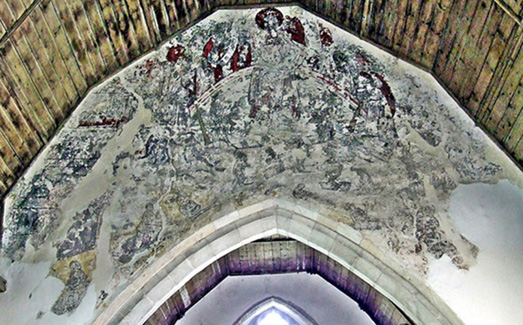
This battered but very large Doom appears at first sight to be a fragmentary and chaotic painting, but at close quarters there are some fascinating details.
A group of Apostles with very characterful faces stands beside Christ’s still-bloodied right arm and hand while an inscribed speech-scroll snakes between them, ending beside the head of St Peter, slightly lower to the left and just identifiable by his gold papal tiara. The inscription on the scroll is not in English, despite first appearances, and according to ET Long¹ originally read ‘Venite, benedicte patris mei (Come, ye blessed of my Father…’). Despite this persistence of Latin, rather than English, Christ’s natural-looking seated posture on the rainbow, certainly far less awkward and unconvincing than that in many other English Dooms, suggests a date very late in the century. There is another scroll (with, no doubt, Discedite, maledicte…) at the right-hand end of the rainbow, just to the right of the trumpeting angel, but this is virtually invisible now.oom appears at first sight to be a fragmentary and chaotic painting, but at close quarters there are some fascinating details.
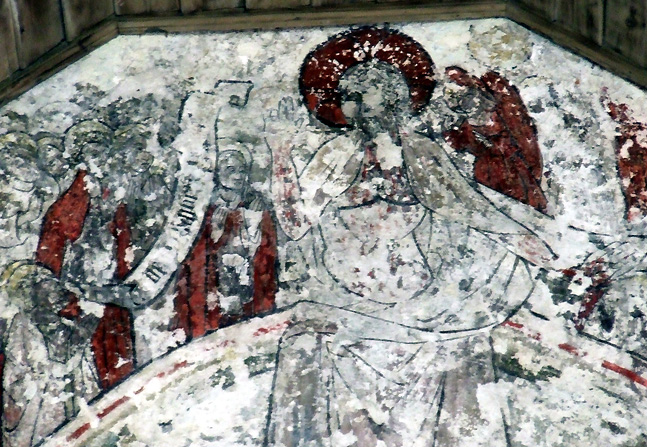
The Virgin, dressed in red, is on the right beside Christ’s head, leaning forward with hands raised in supplication, although she is hard to see against the mass of faded and fragmentary detail around her.
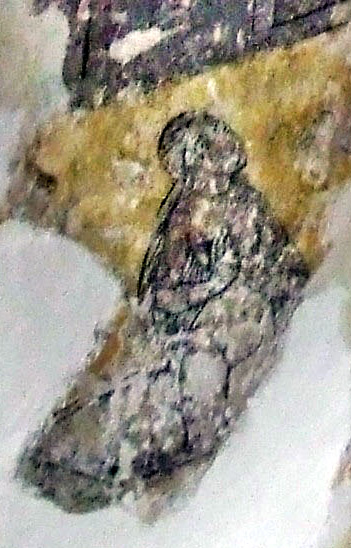
Lower down, two angels blow trumpets and the dead begin to rise, including this very well painted long-haired woman shown against a gold background low down on the left (photo, right). Although it is less marked here, this Stanningfield woman shares something of the calm assurance of her heavenly destination displayed by her counterpart at Holy Trinity, Coventry, something that cannot, I think, be said about the man clambering out of a grave further towards the centre of the Stanningfield example, just above the lower edge of the chancel arch (photo, left).
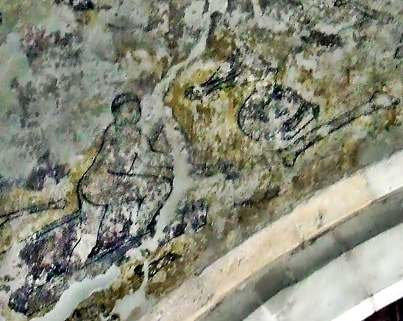
The prominently placed grinning skull and scattered bones around this man reinforce this feeling. Further right, on the other side of the chancel arch is a naked, but complete, skeleton, (photo, left) lying supine just below the bell of the trumpet on the right. This figure’s left arm, bent at the elbow, is raised, presumably in acknowledgement of the sound of the trumpet. There is no visible grave, or shroud, or tomb near the figure, and although it may be entirely accidental, I think this tends to reinforce the universality, in time and in space, of the event, the last ‘event’ of all. The richer have tombs, the poorest may not have even a shroud. It does not matter now.
There were more details visible in an old black and white photograph of the Stanningfield Doom (taken in about 1930) which I have annotated, and depending on the size of your screen you can see enlarged by clicking on the image below.
